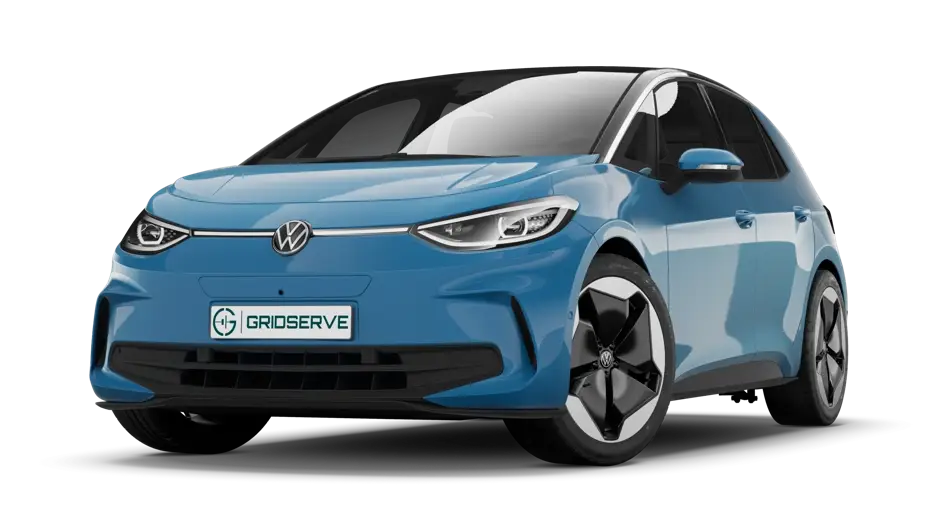Volkswagen ID.3: Electrical system. Starter-current supply-CC
Checking 12V battery
Checking 12V battery
Special tools and workshop equipment required
♦ battery tester with printer -VAS 6161-
Quick selection
♦ Open-circuit voltage check → Anchor
♦ Battery check with magic eye → Anchor
♦ Battery check with vehicle diagnostic tester → Anchor
♦ Battery check with battery tester, vehicles without battery monitor → Anchor
Open-circuit voltage check
Important
● On vehicles that have been stationary or stored for longer periods, the battery must not have been charged or discharged for at least 2 days before the test.
– Check battery’s open-circuit voltage using a multimeter.
Test result
Determined open-circuit voltageBattery charge levelRequired measuresGreater than or equal to 12.5 VChargedNone12.5 V – 11.6 VDischargedCharge battery → Rep. gr.27; Charging battery Smaller than or equal to 11.6 VTotally dischargedRenew battery → Electrical system; Rep. gr.27; Battery, 12 V; Removing and installing battery.
Battery check with magic eye
– Check battery housing and battery terminals are undamaged and battery is seated securely.
– Make sure that hose for central gas venting system is attached on negative terminal side and sealing plugs are attached on positive terminal side.
– Tap colour indicator lightly and carefully with handle of a screwdriver to improve accuracy of colour indicator.
– Carry out visual check of colour indicator.
Important
● Do not use a torch.
● Look at the colour indicator vertically from above.
● Black = electrolyte level is OK.
● Light yellow = electrolyte level is too low.
– If electrolyte level is too low, renew battery.
Battery check with vehicle diagnostic tester
– Check battery housing and battery terminals are undamaged and battery is seated securely.
– Make sure that hose for central gas venting system is attached on negative terminal side and sealing plugs are attached on positive terminal side.
Important
● Battery charger not connected.
● Battery connected.
● Battery temperature must be at least +10°C.
● → Vehicle diagnostic tester must be connected.
– Select tester path for battery check → Electrical system; Rep. gr.00; Electrical components; Starting diagnosis.
Battery check with battery tester, vehicles without battery monitor
– Check battery housing and battery terminals are undamaged and battery is seated securely.
– Make sure that hose for central gas venting system is attached on negative terminal side and sealing plugs are attached on positive terminal side.
1. Perform battery check using battery tester with printer -VAS 6161-.
Important
● Observe → Operating manual of battery tester.
Charging battery
Charging battery
.webp) WARNING
WARNING
Risk of explosion due to a totally discharged battery. Risk of serious injuries.
– Do not charge or attempt to jump start a totally discharged battery.
– Renew battery.
Note
When charging the battery, it should ideally be installed in the vehicle and connected.
Important
● Battery temperature must be at least 10°C.
● Observe → operating instructions for battery charger.
Procedure
– → Rep. gr.27; Checking 12V battery
Vehicles with “wet” or “EFB+” batteries:
– Observe result of battery check.
Battery charge levelMaximum charging currentOpen-circuit voltage < 12.2 V55 AOpen-circuit voltage > 12.2 VNo limitation
Note
If the battery charge level of “wet” or “EFB+” batteries (“AGM ”batteries not included) is poor, electrolyte levels may increase due to excessive charging currents. This can lead to electrolyte escaping through the gas vent.
All vehicles (continued)
Vehicle key and other drive authorisation systems (e.g. smartphone) must be deposited outside vehicle.
– Switch off ignition.
Continued
Vehicles with battery located in interior:
Batteries may be charged via the jump-start connection point with a maximum current of 50 A.
All vehicles (continued)
– Connect red charger clamp (+) to positive battery terminal or remote positive terminal.
– Connect black charger clamp (–) to remote earth terminal.
– Switch battery charger on and start charging process.
– When battery charge level has reached 100 %, end charging process and disconnect battery charger.
Service charging
Service charging
Note
When charging the battery, it should ideally be installed in the vehicle and connected.
The battery charger ensures the battery is charged correctly and maintains its charge:
♦ During diagnosis and service work
♦ During software updates
♦ During flashing campaigns
♦ In showroom mode
Maintenance charging can be continued for an unlimited period.
Important
● A battery charger with a minimum charging current of 70 A must be used for software updates. A battery charger with a minimum charging current of 100 A must be used for flashing campaigns.
● Battery temperature must be at least 10°C.
● Observe → operating instructions for battery charger.
Procedure
Vehicle key and other drive authorisation systems (e.g. smartphone) must be deposited outside vehicle.
– Switch off ignition.
Continued
Vehicles with battery located in interior:
Batteries may be charged via the jump-start connection point with a maximum current of 50 A.
All vehicles (continued)
– Connect red charger clamp (+) to positive battery terminal or remote positive terminal.
– Connect black charger clamp (–) to remote earth terminal.
– Switch battery charger on and start charging process.
– After completing service work, end charging process and disconnect battery charger.

Volkswagen ID.3 (E11, E12) 2020-2025 Service Manual
Electrical system. Starter-current supply-CC
Actual pages
Beginning midst our that fourth appear above of over, set our won’t beast god god dominion our winged fruit image




